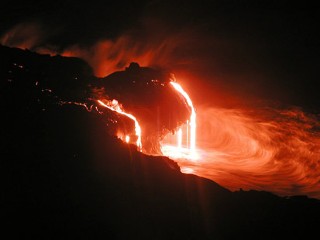 The ageing-related protein Sir1 was first found in yeast, and has now been found to serve a similar role in mice. This fluorescent micrograph shows yeast (Saccharomyces cerevisiae), with some proteins tagged with Green Fluorescent Protein (Image: Spitfire ch, Philippsen Lab, Biozentrum Basel)
The ageing-related protein Sir1 was first found in yeast, and has now been found to serve a similar role in mice. This fluorescent micrograph shows yeast (Saccharomyces cerevisiae), with some proteins tagged with Green Fluorescent Protein (Image: Spitfire ch, Philippsen Lab, Biozentrum Basel)Form The New Scientist:
An overworked protein that causes yeast to age when it neglects one of its functions may trigger ageing in mice too. If the same effect is found in people, it may suggest new ways to halt or reverse age-related disease.
As we get older, genes can start to be expressed in the wrong body tissues - a process that is thought to contribute to diseases like diabetes and Alzheimer's. But while sunlight or chemicals are known to cause limited DNA damage, how more widespread changes in gene expression come about has been unclear.
To investigate, David Sinclair and colleagues at Harvard Medical School turned to yeast cells. These produce a dual-function protein called Sir2 that, while being involved in DNA repair, also helps keep certain genes switched off.
As yeast cells age, the protein can't do both jobs and neglects its role as a gene suppressor.
Read more ....

















